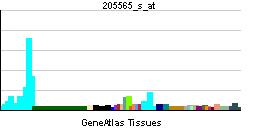Frataxin
| Frataxin | |||||||||||||
|---|---|---|---|---|---|---|---|---|---|---|---|---|---|
 PDB rendering based on 1ekg. | |||||||||||||
| |||||||||||||
| Identifiers | |||||||||||||
| Symbols | FXN ; FA; CyaY; FARR; FRDA; MGC57199; X25 | ||||||||||||
| External IDs | Template:OMIM5 Template:MGI HomoloGene: 47908 | ||||||||||||
| |||||||||||||
| RNA expression pattern | |||||||||||||
 | |||||||||||||
| More reference expression data | |||||||||||||
| Orthologs | |||||||||||||
| Template:GNF Ortholog box | |||||||||||||
| Species | Human | Mouse | |||||||||||
| Entrez | n/a | n/a | |||||||||||
| Ensembl | n/a | n/a | |||||||||||
| UniProt | n/a | n/a | |||||||||||
| RefSeq (mRNA) | n/a | n/a | |||||||||||
| RefSeq (protein) | n/a | n/a | |||||||||||
| Location (UCSC) | n/a | n/a | |||||||||||
| PubMed search | n/a | n/a | |||||||||||
Frataxin' is a small protein, localized to the mitochondrion. The function of frataxin is not entirely clear, but it seems to be involved in assembly of iron-sulfur clusters.
Deficiency of frataxin is the cause of Friedrich's ataxia, a hereditary trinucleotide repeat disorder.
This nuclear gene encodes a mitochondrial protein which belongs to FRATAXIN family. The protein functions in regulating mitochondrial iron transport and respiration. The expansion of intronic trinucleotide repeat GAA results in Friedreich ataxia. Alternative splicing occurs at this locus and two transcript variants encoding distinct isoforms have been identified.[1]
References
Further reading
- Montermini L, Rodius F, Pianese L; et al. (1995). "The Friedreich ataxia critical region spans a 150-kb interval on chromosome 9q13". Am. J. Hum. Genet. 57 (5): 1061–7. PMID 7485155.
- Campuzano V, Montermini L, Moltò MD; et al. (1996). "Friedreich's ataxia: autosomal recessive disease caused by an intronic GAA triplet repeat expansion". Science. 271 (5254): 1423–7. PMID 8596916.
- Carvajal JJ, Pook MA, dos Santos M; et al. (1996). "The Friedreich's ataxia gene encodes a novel phosphatidylinositol-4- phosphate 5-kinase". Nat. Genet. 14 (2): 157–62. doi:10.1038/ng1096-157. PMID 8841185.
- Bidichandani SI, Ashizawa T, Patel PI (1997). "Atypical Friedreich ataxia caused by compound heterozygosity for a novel missense mutation and the GAA triplet-repeat expansion". Am. J. Hum. Genet. 60 (5): 1251–6. PMID 9150176.
- Babcock M, de Silva D, Oaks R; et al. (1997). "Regulation of mitochondrial iron accumulation by Yfh1p, a putative homolog of frataxin". Science. 276 (5319): 1709–12. PMID 9180083.
- Koutnikova H, Campuzano V, Foury F; et al. (1997). "Studies of human, mouse and yeast homologues indicate a mitochondrial function for frataxin". Nat. Genet. 16 (4): 345–51. doi:10.1038/ng0897-345. PMID 9241270.
- Wilson RB, Roof DM (1997). "Respiratory deficiency due to loss of mitochondrial DNA in yeast lacking the frataxin homologue". Nat. Genet. 16 (4): 352–7. doi:10.1038/ng0897-352. PMID 9241271.
- Campuzano V, Montermini L, Lutz Y; et al. (1998). "Frataxin is reduced in Friedreich ataxia patients and is associated with mitochondrial membranes". Hum. Mol. Genet. 6 (11): 1771–80. PMID 9302253.
- Rötig A, de Lonlay P, Chretien D; et al. (1997). "Aconitase and mitochondrial iron-sulphur protein deficiency in Friedreich ataxia". Nat. Genet. 17 (2): 215–7. doi:10.1038/ng1097-215. PMID 9326946.
- Jiralerspong S, Liu Y, Montermini L; et al. (1997). "Frataxin shows developmentally regulated tissue-specific expression in the mouse embryo". Neurobiol. Dis. 4 (2): 103–13. doi:10.1006/nbdi.1997.0139. PMID 9331900.
- Koutnikova H, Campuzano V, Koenig M (1998). "Maturation of wild-type and mutated frataxin by the mitochondrial processing peptidase". Hum. Mol. Genet. 7 (9): 1485–9. PMID 9700204.
- Zühlke C, Laccone F, Cossée M; et al. (1998). "Mutation of the start codon in the FRDA1 gene: linkage analysis of three pedigrees with the ATG to ATT transversion points to a unique common ancestor". Hum. Genet. 103 (1): 102–5. PMID 9737785.
- Bartolo C, Mendell JR, Prior TW (1999). "Identification of a missense mutation in a Friedreich's ataxia patient: implications for diagnosis and carrier studies". Am. J. Med. Genet. 79 (5): 396–9. PMID 9779809.
- Cossée M, Dürr A, Schmitt M; et al. (1999). "Friedreich's ataxia: point mutations and clinical presentation of compound heterozygotes". Ann. Neurol. 45 (2): 200–6. PMID 9989622.
- Coppola G, De Michele G, Cavalcanti F; et al. (1999). "Why do some Friedreich's ataxia patients retain tendon reflexes? A clinical, neurophysiological and molecular study". J. Neurol. 246 (5): 353–7. PMID 10399865.
- Branda SS, Cavadini P, Adamec J; et al. (1999). "Yeast and human frataxin are processed to mature form in two sequential steps by the mitochondrial processing peptidase". J. Biol. Chem. 274 (32): 22763–9. PMID 10428860.
- Gordon DM, Shi Q, Dancis A, Pain D (1999). "Maturation of frataxin within mammalian and yeast mitochondria: one-step processing by matrix processing peptidase". Hum. Mol. Genet. 8 (12): 2255–62. PMID 10545606.
- Forrest SM, Knight M, Delatycki MB; et al. (2000). "The correlation of clinical phenotype in Friedreich ataxia with the site of point mutations in the FRDA gene". Neurogenetics. 1 (4): 253–7. PMID 10732799.
- Al-Mahdawi S, Pook M, Chamberlain S (2000). "A novel missense mutation (L198R) in the Friedreich's ataxia gene". Hum. Mutat. 16 (1): 95. doi:10.1002/1098-1004(200007)16:1<95::AID-HUMU29>3.0.CO;2-E. PMID 10874325.
- Dhe-Paganon S, Shigeta R, Chi YI; et al. (2000). "Crystal structure of human frataxin". J. Biol. Chem. 275 (40): 30753–6. doi:10.1074/jbc.C000407200. PMID 10900192.
External links
- frataxin at the US National Library of Medicine Medical Subject Headings (MeSH)
| This protein-related article is a stub. You can help Wikipedia by expanding it. |